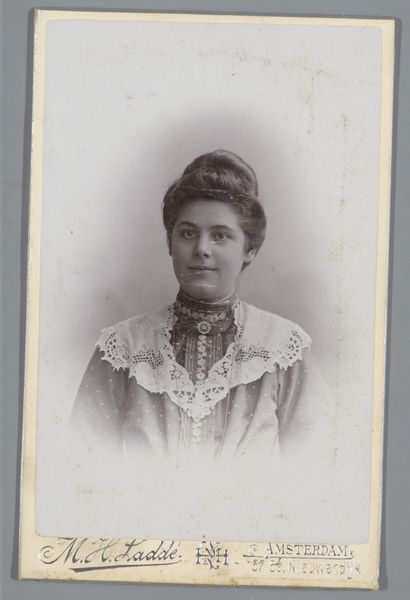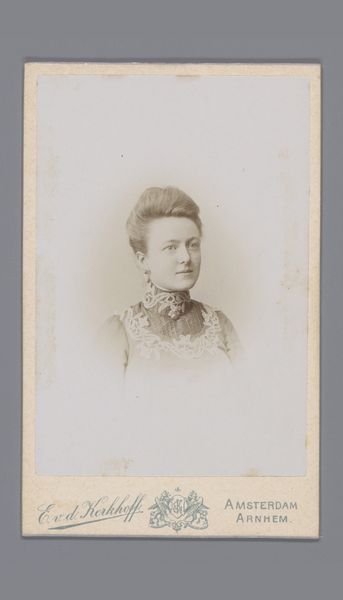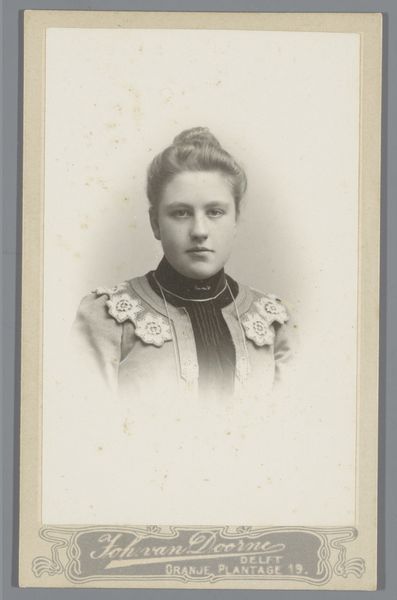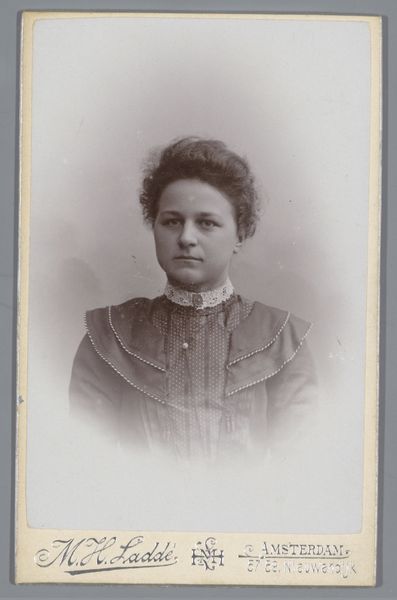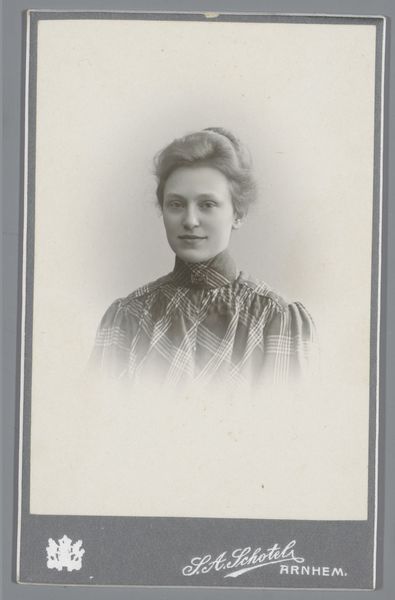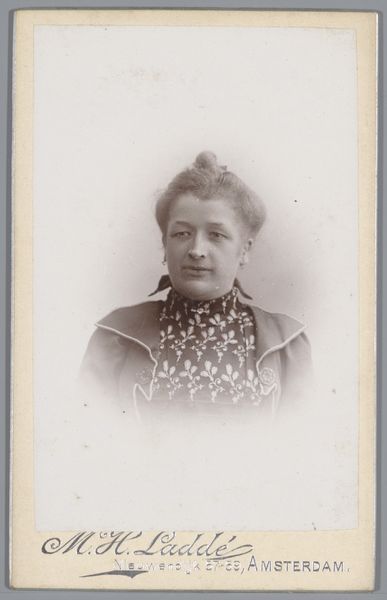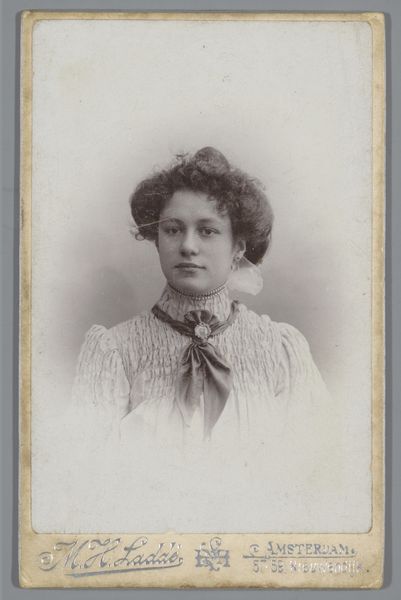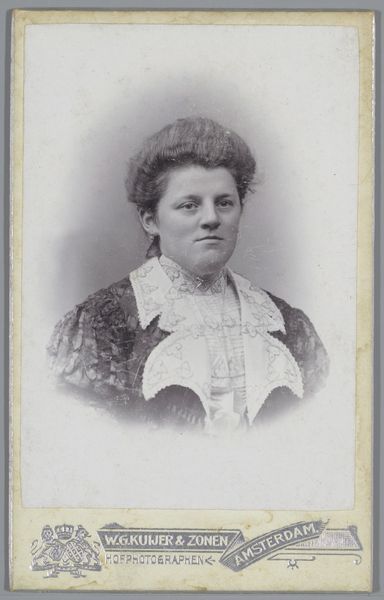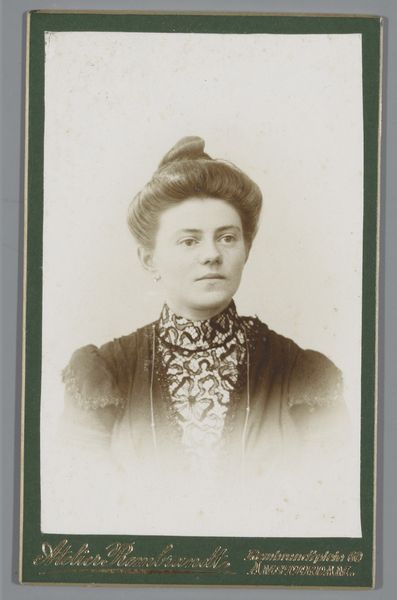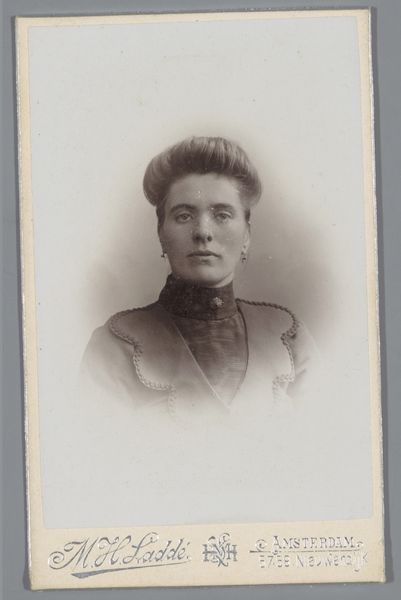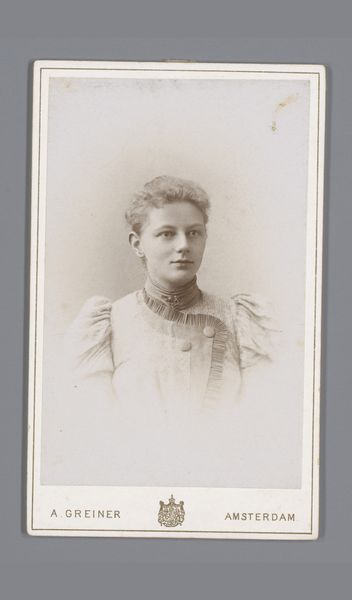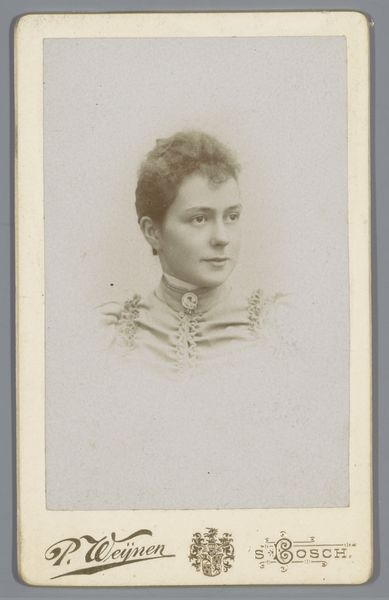
photography, gelatin-silver-print
#
portrait
#
photography
#
historical fashion
#
gelatin-silver-print
#
realism
Dimensions: height 105 mm, width 66 mm
Copyright: Rijks Museum: Open Domain
Editor: This is a gelatin silver print by Machiel Hendricus Laddé, titled "Portret van een onbekende vrouw", and it’s dated somewhere between 1892 and 1906. The woman's gaze is so direct, and her outfit suggests a certain status. I'm curious about her place in society. What stands out to you in this portrait? Curator: What strikes me is how this portrait participates in the democratisation of image-making happening at this time, particularly how it reflects and shapes bourgeois identity. Photographic studios, like Laddé’s in Amsterdam, became spaces where individuals could actively construct and disseminate their own public image. What does her attire communicate to you about that? Editor: I see a meticulously patterned high-necked blouse and a delicate necklace. It looks quite formal, almost restrictive. It gives off an aura of respectability and perhaps hints at wealth, or at least aspirations towards it. Was photography used as a tool for social mobility then? Curator: Exactly. Photography allowed individuals from the burgeoning middle class to visually align themselves with established elites. It was a powerful medium for performing social roles and, importantly, controlling the narrative around their identity. It's not just about mimicking wealth, but about asserting a certain level of cultural capital. This highlights the fascinating interplay between art, identity, and social mobility that becomes possible through photography. Editor: So, it's not just a simple portrait, but a statement. The subject seems to be actively crafting an image of herself for public consumption, participating in the evolving dynamics of Dutch society. That's so much more than I initially perceived. Curator: Precisely. Reflecting on it now, we can both acknowledge the historical fashion while noticing the intentional public display and constructed image the woman put on for display.
Comments
No comments
Be the first to comment and join the conversation on the ultimate creative platform.

